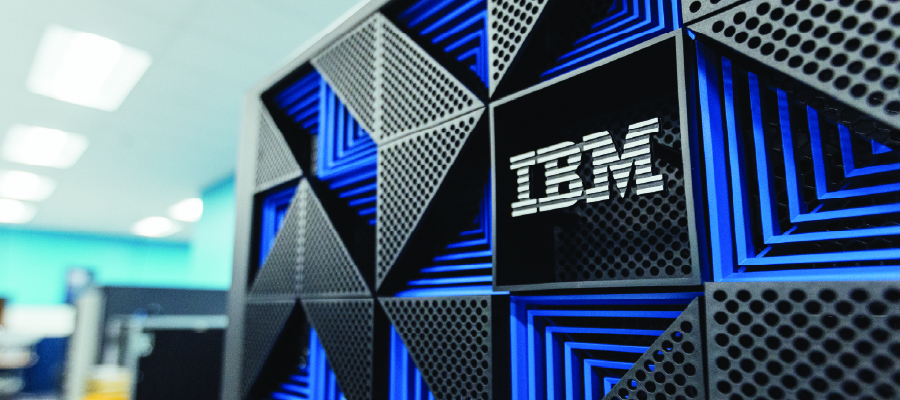Surprise, Power11 is here!
If you’re not surprised at all, that’s understandable. IBM has been relatively consistent with its release cadence and the incrementing number in the server’s name. However, knowing it’s coming doesn’t tell us what’s inside, so let’s take a look!
How similar are Power10 and Power11?
Some will say this release is more like Power10+ than a whole new Power11. Others will say that the processor inside is Power11, so that’s what it is.
We need to look at the big picture, and there are no significant changes for those items. These include:
PCIe slots are still Gen5 and Gen4
Is this a problem? Since most of the available cards are Gen4 and even Gen3, it’s likely that Gen6 slots would be wasted today. I expect Gen6 slots and cards to debut in the PowerNext generation of servers.
Memory module locations and interfaces remain the same as Power10
This IBM-designed interface provides twice as many connections per CPU as competing processors. It also moves the DDR logic from the CPU to the memory module. This allowed Power10-based servers to upgrade from DDR4 to DDR5 without CPU changes.
Logically, Power11 servers should be able to upgrade from DDR5 to DDR6 if the DDR6 specification becomes available soon. For the record, I’m not holding my breath on this! While some lesser systems may try out pre-spec DDR6 memory, it makes no sense for IBM to release anything that isn’t entirely up to the final specifications, and DDR6 is nowhere near completed.
Before assuming all memory is the same, consider that most memory capacities doubled from Power10 to Power11 with the new higher-density chips on the modules.
The most prominent feature now delivers 512GB of memory on a single module. That one feature has more than a thousand times the storage of the largest hard drive of the original AS/400! It’s also cheaper, faster, smaller and uses less power. Who knew?
Looking inside the server
Many visible features are the same as Power10. These include the number and speed of slots, the number of sockets and the number of DIMM slots. Beyond the cabinet, nearly all the I/O cards and NVMe modules are also identical. There’s a new 200Gbps Ethernet adapter for those who feel the need for speed!
One conspicuously absent member of the Power11 family is the very popular 41A single CPU socket server model. Less surprisingly, the S1012 half-wide 2U edge-level server, announced only last year, hasn’t been refreshed for Power11.
Other physical system changes include removing support for external drawers that hold old-fashioned spinning disk drives. These couldn’t have been ordered with Power10, but they were at least supported on those servers. Power11 disk choices include NVMe and external storage. Would you like to see that list again?
If you’ve absorbed everything I’ve said so far, you might be thinking, “Ho hum. It was time for IBM to release a new machine, so they added 1, got 11 and here we are.”
If you think that way, you haven’t read far enough!
How does Power11 outperform Power10?
Higher memory frequencies with lower latency
In addition to increased memory capacity in Power11, these servers significantly improve memory throughput using higher memory frequencies with lower latency. Memory in Power11 servers is all DDR5 with frequencies up to 4800 MHz. Compared to Power10 DDR5 memory, speeds are often 50% faster. From Power10 servers with DDR4, the DDR5 on Power11 operates as much as 80% faster!
An enhanced processor chip
As mentioned previously, the processor chip is Power11, and while it has the same shape and number of pins as Power10, it’s enhanced! The Power11 processor is based on Power10, which is true, but there are updates.
These include more active cores per socket, two spare cores per socket in most configurations and higher core frequencies. Despite having more cores and higher frequencies, they still achieve improved energy efficiency. The system’s energy efficiency mode can also be scheduled to maximize throughput during peak workload times but scale back energy use during periods of low utilization.
Reliability and zero planned downtime
Another focus IBM has for Power11 servers is improving uptime for the server line. We all know that Power servers have been the most reliable servers for running your business for years, but IBM isn’t resting on its laurels regarding reliability. With Power11, IBM aims for zero planned downtime, leveraging capabilities like Live Partition Mobility (LPM) for the increasingly rare cases when a server outage is required to perform an update.
Automated data collection
Starting in the AS/400 days, IBM i gained the ability to “phone home” to report hardware and operating system issues. That capability has improved with every release. With Power11, IBM has automated even more data collection, not just from the operating system, but from all areas across the hardware and supporting components, so that when an issue arises, IBM will automatically have the needed troubleshooting data at its fingertips. For the customer, this means less work to report issues and less time for resolution.
So, is it Power11 or Power10+?
I’d say you could call it either way, as long as it’s Power10 with more memory, faster memory, more cores and more GHz — thus, better overall system performance with greater efficiency! Additionally, increased reliability, quality and timely reporting, spare cores and reaching Six 9’s of availability. Quantum-safe encryption for Secure Boot and LPM offers improved security. And it wouldn’t be 2025 if the system didn’t gain more AI capabilities.
While there may not have been any surprises in the naming, one thing remains clear: Power11 is IBM’s next-generation Power server.
Topics:



